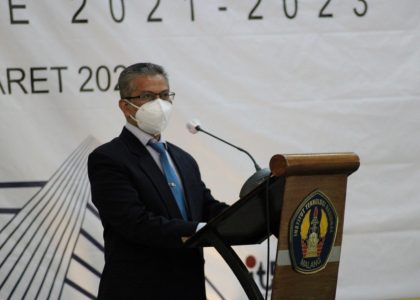Joyashree Roy, J., Eddy Moors, E., Murthy, M. S. R., Prabhakar, S. V. R. K., Khattak, B. N., Shi, P., Huggel, C., & Chitale, V. (2019). Exploring Futures of the Hindu Kush Himalaya: Scenarios and Pathways. In Wester, P., Mishra, A., Mukherji, A. & Shrestha, A. B. (Eds.), The Hindu Kush Himalaya Assessment (pp.99-125). Springer.
Prof. Joyashree Roy from the AIT’s Department of Energy, Environment and Climate Change co-authored a chapter entitled Exploring Futures of the Hindu Kush Himalaya: Scenarios and Pathways in The Hindu Kush Himalaya Assessment published by Springer on 5 january 2019.
This was initiated by the International Centre for Integrated Mountain Development (ICIMOD) as a part of the Hindu Kush Himalayan Monitoring and Assessment Programme (HIMAP). According to Prof. Roy, this assessment is one of it’s kind to talk of high mountain region’s developmental challenges which is also a unique ecosystem.” She stressed that “Himalaya is becoming to be branded as the Third Pole (besides North and South Poles) and is under threat of global climate change. The report clearly states that Global attention for managing climate change at lower warning level is an urgent necessity for human and natural ecosystem to sustain in the region.” However, the report also shows there are enough opportunities in the region for progress as well, she added.
Abstract:
To illuminate future uncertainties and inform strategic plans, this chapter presents three qualitative scenarios for the status of the HKH through 2080. The scenarios (Box 4.1) emerged from a participatory visioning exercise for scenario development (also see Sect. 4.1.2) conducted by the chapter team and HIMAP secretariat between January and September 2016. Over six successive workshops, decision makers and scientists representing HKH countries determined what would constitute a “prosperous” HKH scenario for 2080—along with its less desirable alternatives, business as usual and downhill (Fig. 4.1).
The full report can be assessed here




